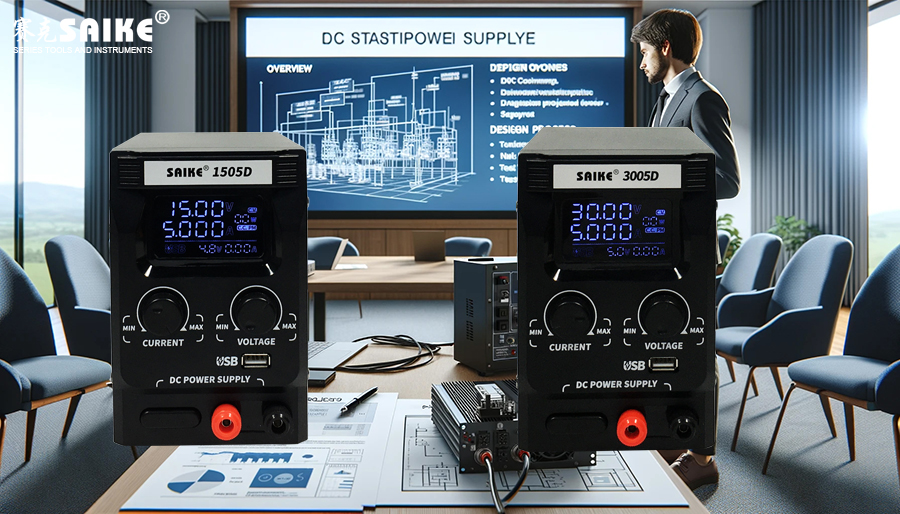
SK-YJ000ZLWYDY-KP 100036
DC stabilized power supplies are crucial components for ensuring the safe and efficient operation of electronic equipment, making their reliability design essential. Designing a highly reliable DC stabilized power supply involves various techniques and measures, including selecting appropriate components, implementing effective protection mechanisms, optimizing thermal management, and conducting rigorous testing. This article will delve into these aspects and provide practical design guidance.
I. Choosing High-Quality Components
1.Capacitors and Semiconductors:
– Select high-temperature resistant, long-life capacitors, such as solid electrolytic capacitors, to enhance overall stability and durability.
– Utilize high-efficiency, low-failure rate semiconductor devices, such as high-performance MOSFETs and voltage regulator ICs.
2.Circuit Board Design:
– Adopt multilayer printed circuit boards (PCBs) to ensure optimized electrical paths and reduce noise and interference.
– Use PCB materials with good thermal conductivity to aid in heat dissipation.
II. Implementing Effective Protection Mechanisms
1.Integrated Protection Features:
– Incorporate overvoltage, overcurrent, short circuit, and temperature protection features to ensure the safe operation of the power supply under any abnormal conditions.
– Design an automatic recovery function to allow the power supply to automatically resume normal operation after the abnormal situation is resolved.
2.Sensitive Detection System:
– Deploy high-precision sensors in the power supply to monitor voltage, current, and temperature in real-time.
– Utilize advanced microprocessors to quickly process abnormal signals and respond accordingly.
III. Optimizing Thermal Management
1.Efficiency Improvement:
– Prioritize improving conversion efficiency during the design phase to reduce heat generation due to power loss.
– Select an appropriate switching frequency to balance efficiency and thermal performance.
2.Cooling System Design:
– Adopt effective cooling designs, such as using heat sinks, fans, or heat pipes.
– Ensure that the layout and size of the cooling components can accommodate the thermal load during prolonged operation.
IV. Conducting Rigorous Testing and Validation
1.Performance Testing:
– Perform comprehensive performance testing on the power supply, including long-term stability testing, load testing, and environmental adaptability testing.
– Utilize advanced testing equipment and software to simulate various operating conditions and load changes.
2.Quality Control:
– Implement strict quality control during the production process to ensure that each component meets design specifications.
– Conduct spot checks on final products to ensure that the mass-produced power supplies meet safety and performance standards.
V. Conclusion
Designing a highly reliable DC stabilized power supply is a comprehensive engineering challenge that considers electrical performance, component selection, protective measures, and thermal management. By adopting the aforementioned measures, the stability and safety of DC stabilized power supplies can be significantly improved, extending their service life and reducing maintenance costs. Furthermore, a rigorous testing and quality control process is crucial to ensuring the reliability of the power supply, which is essential for enhancing customer trust and satisfaction.


